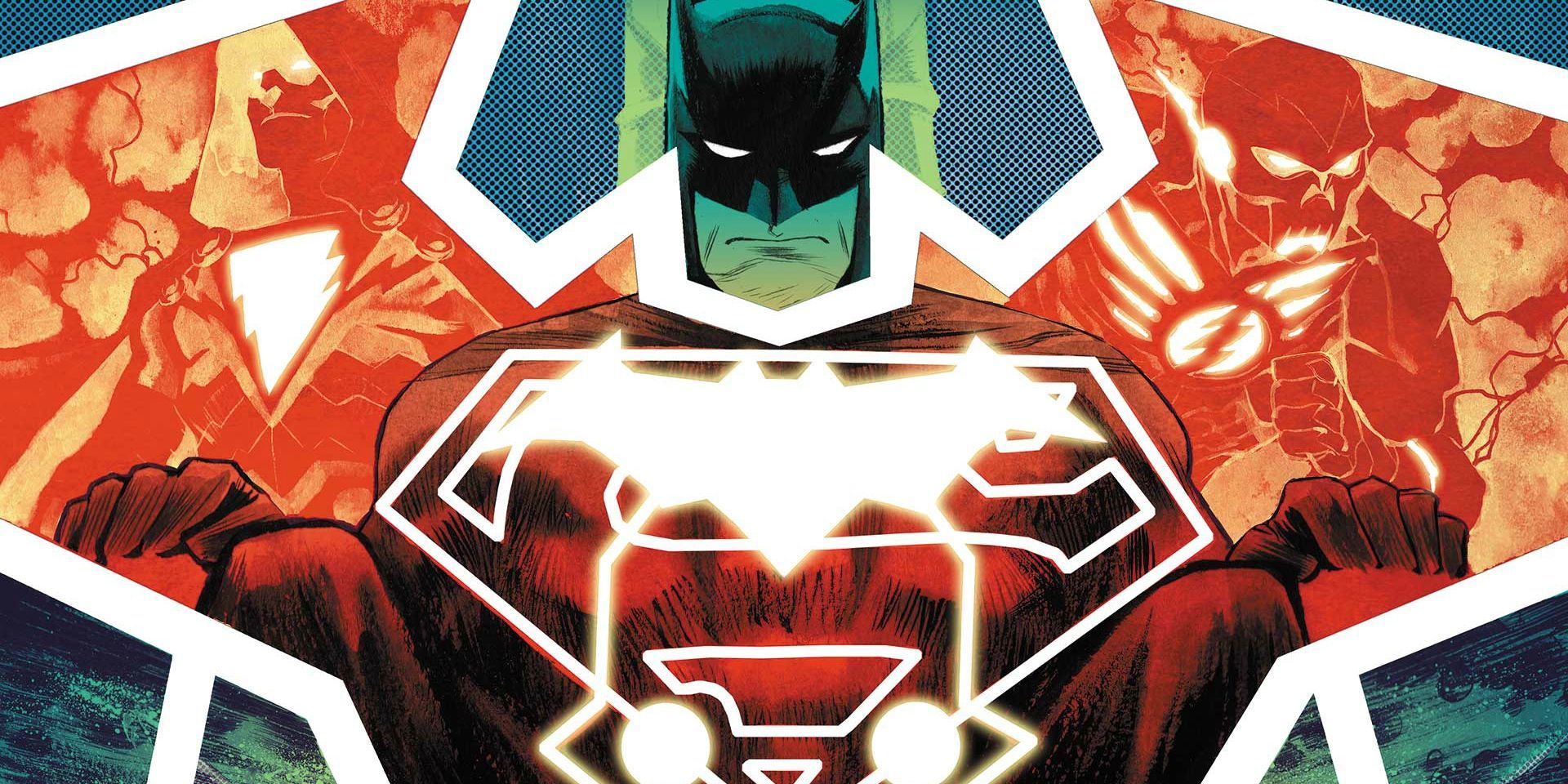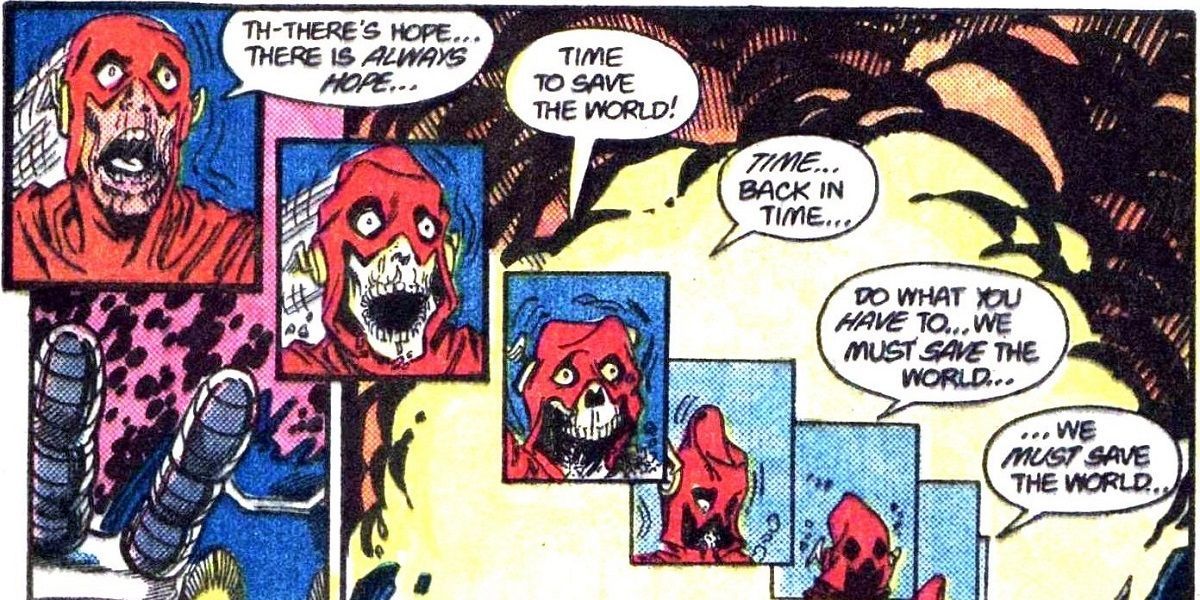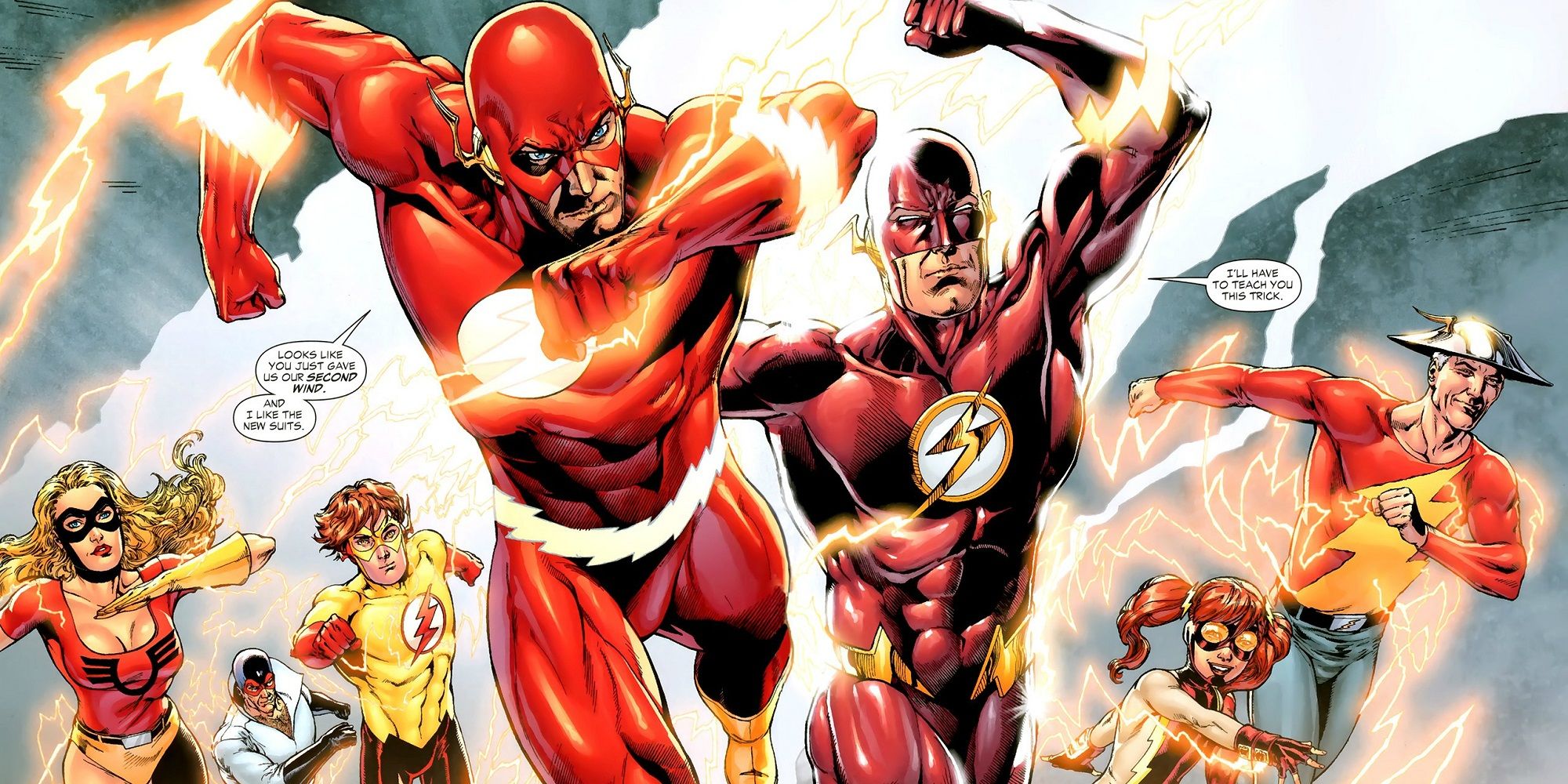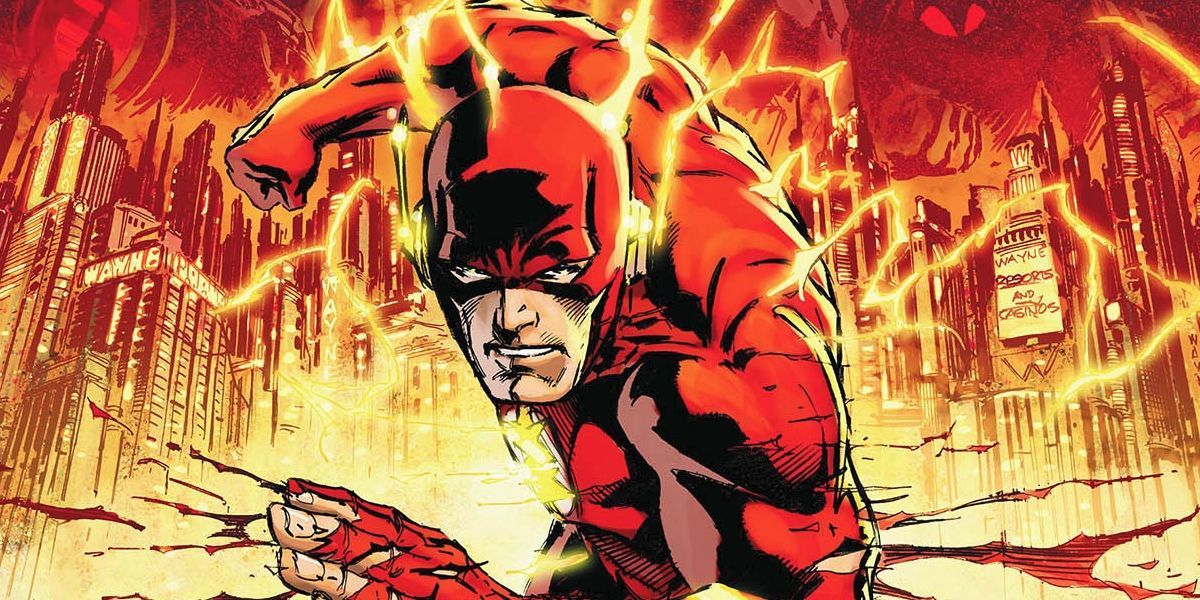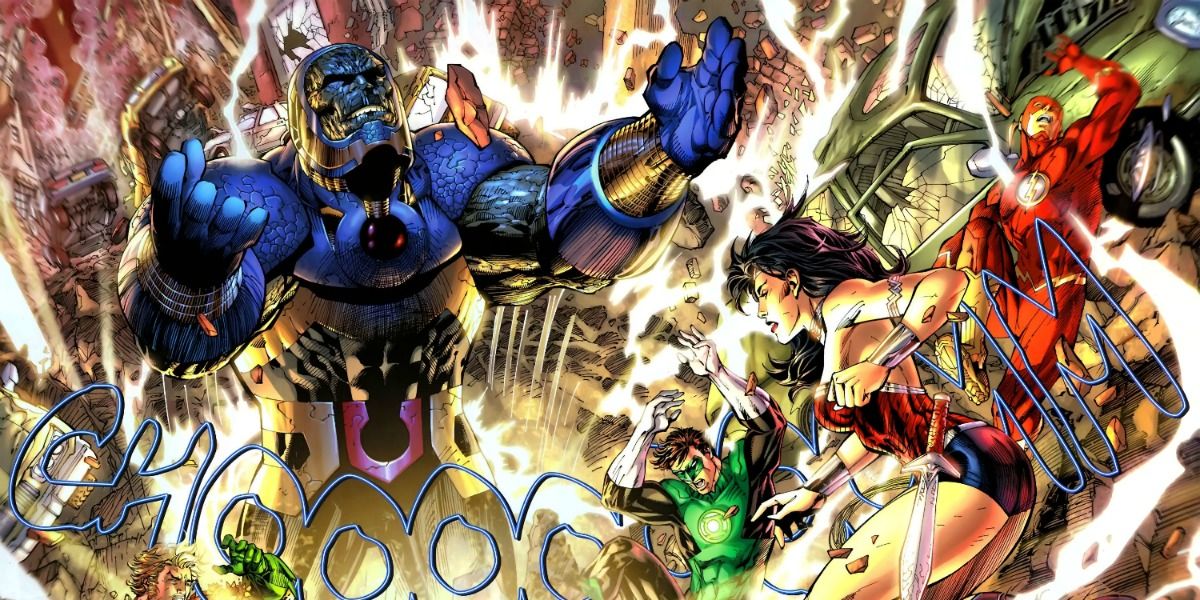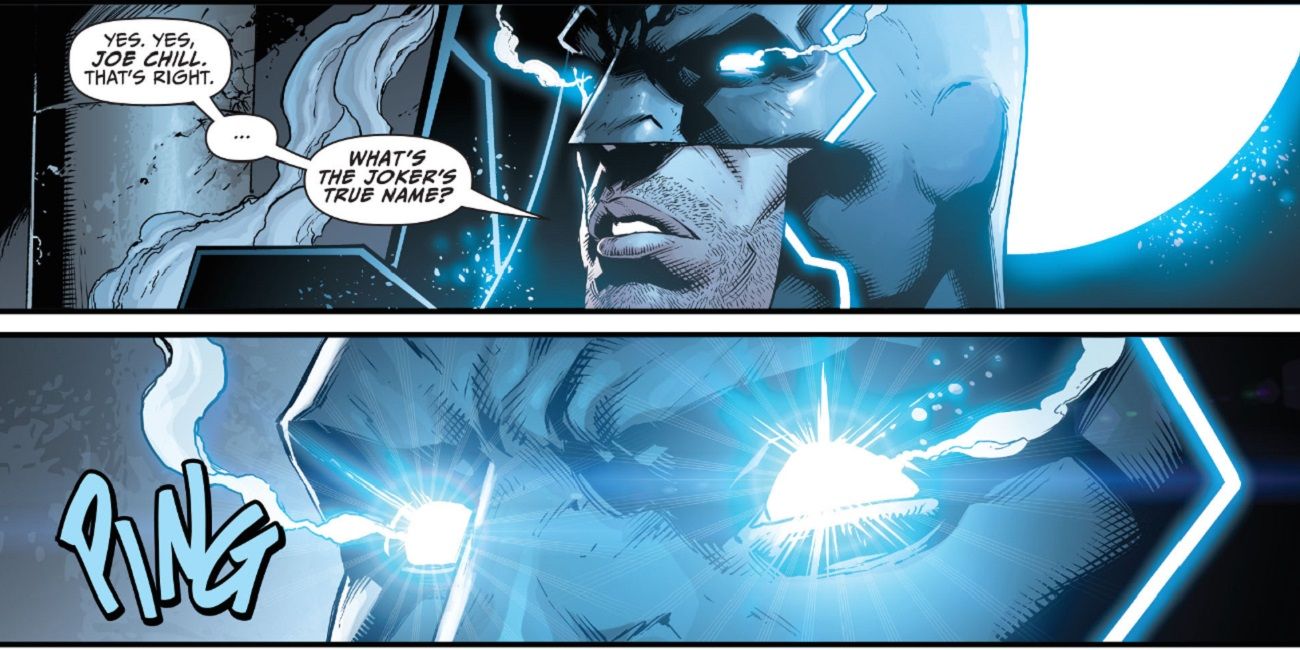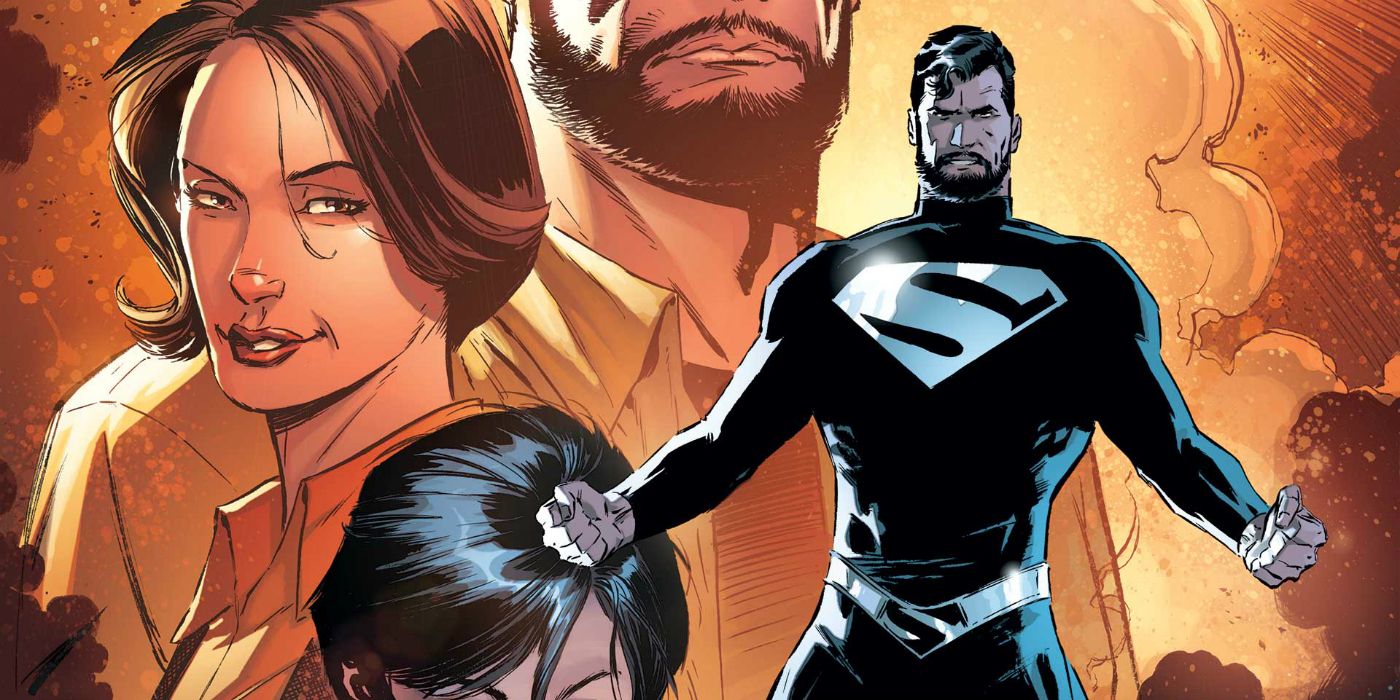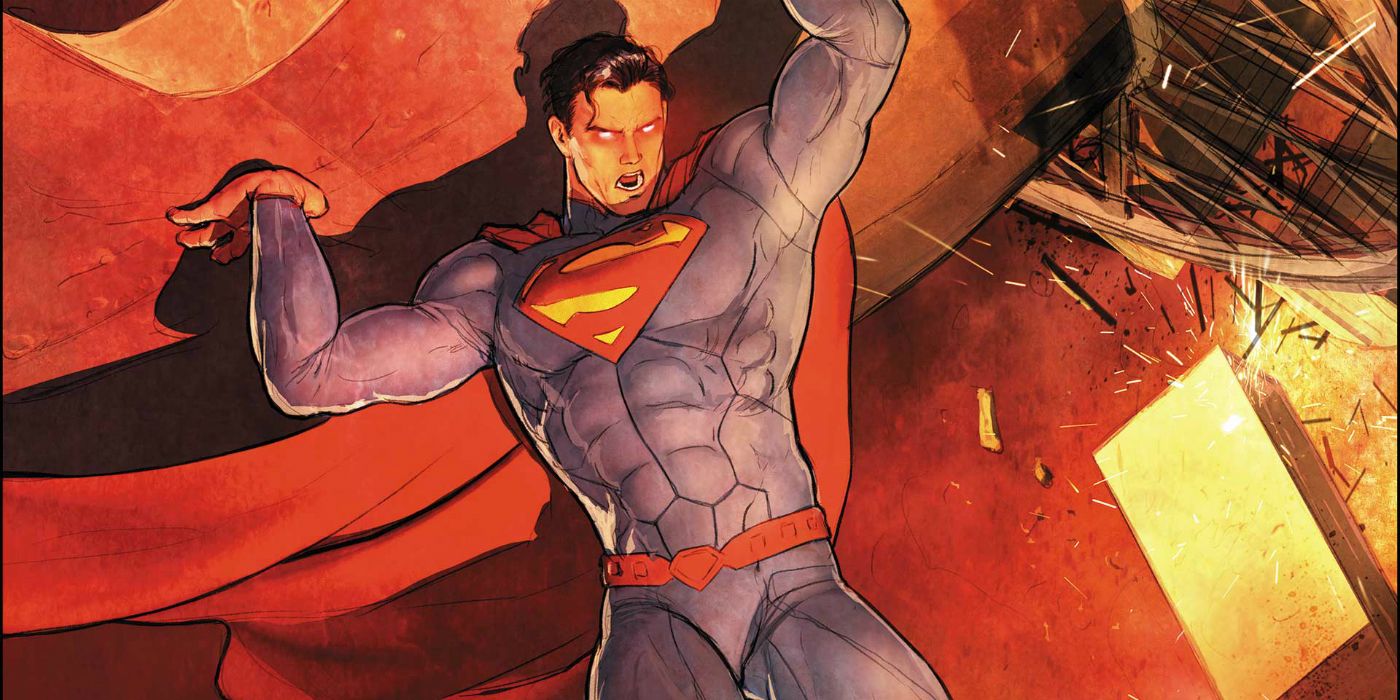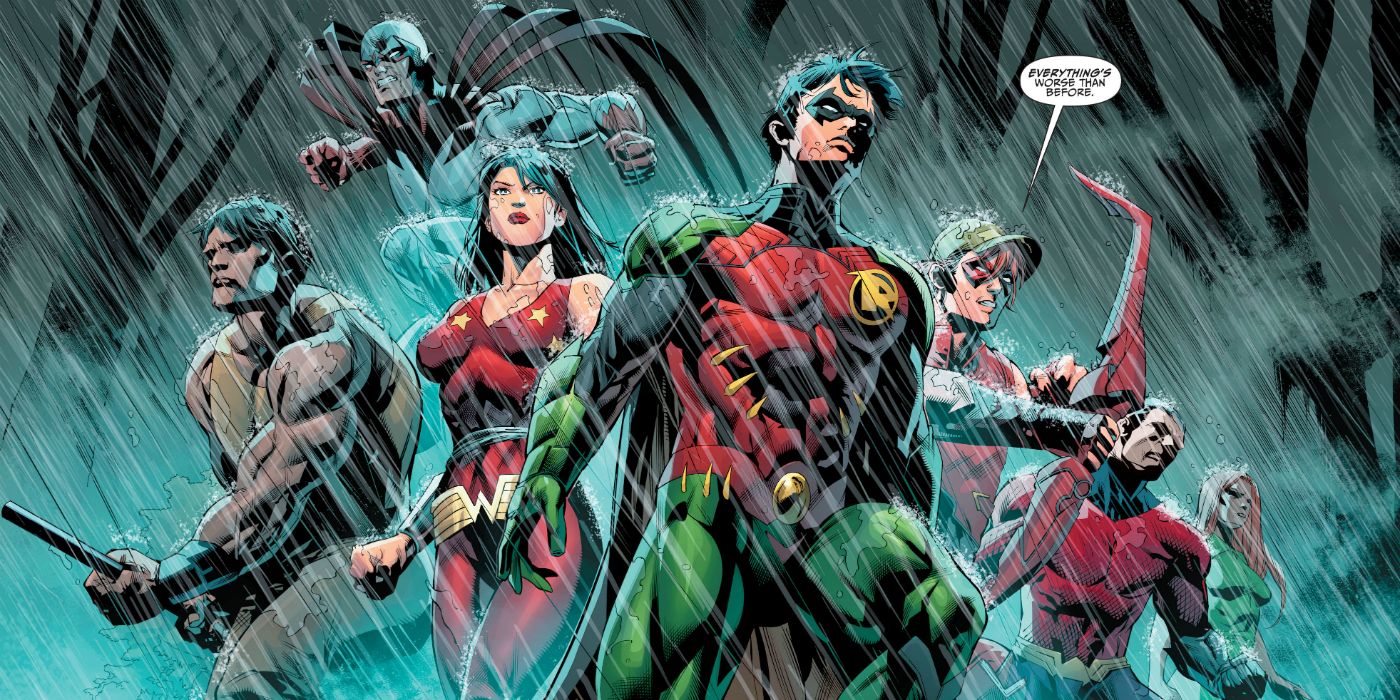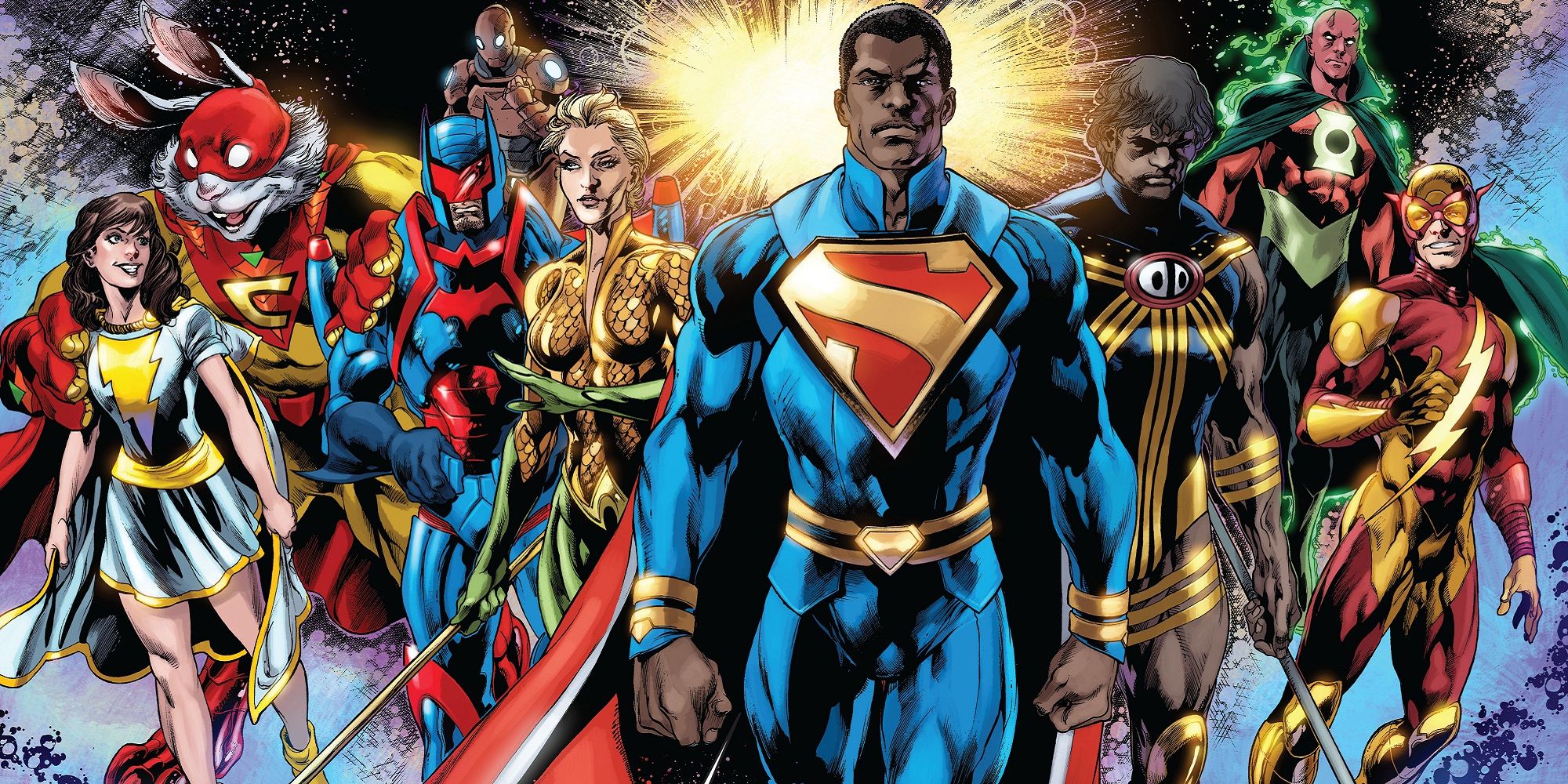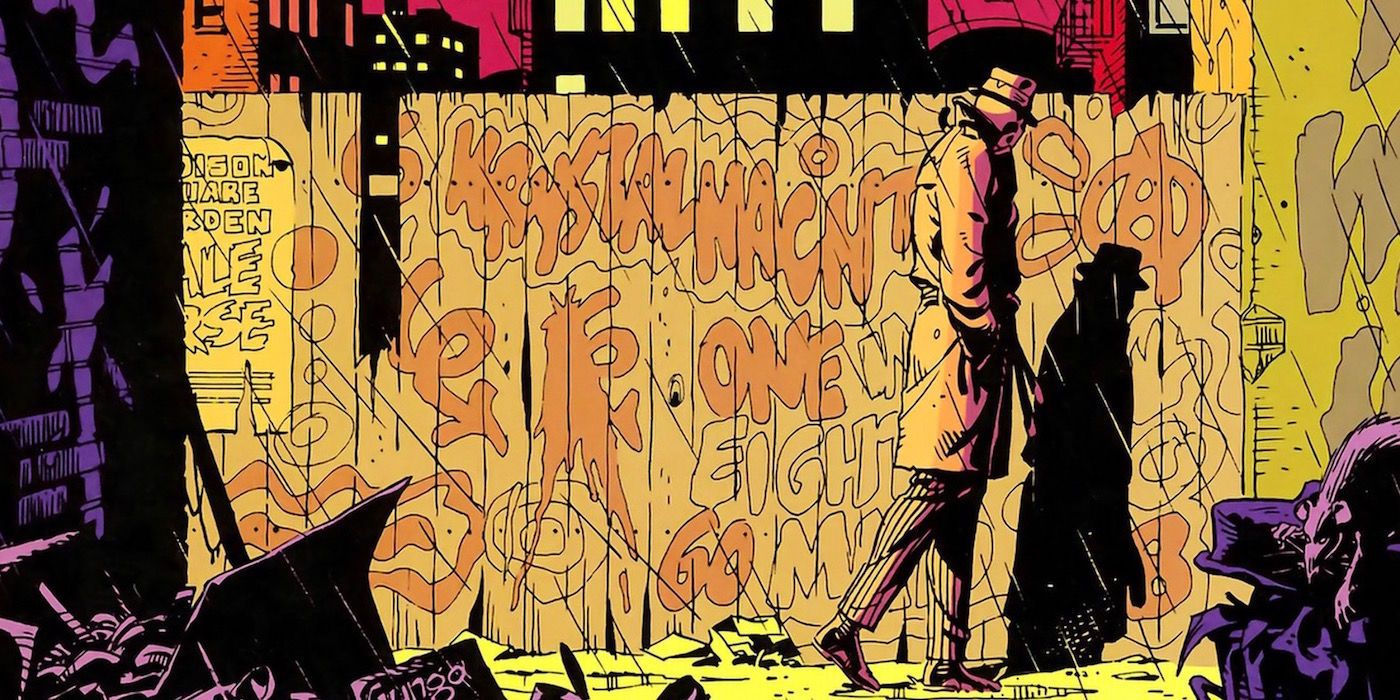To the uninitiated, the DC Comics universe is something of an incoherent mess, filled with countless continuity errors and reboots. The company-wide event Rebirth aims to change that perception by not rebooting but rather relaunching the DC Universe, merging the pre-Flashpoint/pre-New 52 continuity with The New 52 continuity.
The first issue, DC Universe: Rebirth #1, is reasonably newcomer-friendly and does a tremendous job of introducing characters and explaining past events to first-time readers, though it undoubtedly leaves some of those readers in quite a conundrum. After all, it's not easy to explain how Batman knows there are three Jokers, where the pre-Flashpoint Superman came from, and why The New 52 Superman is now missing.
Which is why we put together a list of comics that can help answer some of the lingering questions new readers may have. Here are the 10 Comics To Read After DC Universe: Rebirth #1.
10. Crisis
Before Flashpoint, the DC Universe was divided into pre-Crisis and post-Crisis continuities, created by the quintessential crossover event, Crisis on Infinite Earths. During its first 50 years, DC Comics was plagued with continuity issues, such as Superman suddenly acquiring the ability to fly. In order to rectify their missteps, DC devised a story that would result in all the parallel Earths merging into one continuity. Unfortunately, in doing so, Supergirl and the Flash (Barry Allen) were killed, leaving former Kid Flash Wally West to assume the mantle of the Fastest Man Alive.
DC Comics produced two sequel story arcs, Infinite Crisis and Final Crisis, which released in 2005 and 2008, respectively, eventually leading to the return of Barry Allen and a conclusion to the trilogy of multiverse-altering crises. Rebirth is arguably the biggest event to occur since the first Crisis, because it doesn't reboot the DC universe, but rather relaunches it with multiple continuities consolidating into one universe.
9. The Flash: Rebirth (2009)
Before the big DC Comics relaunch with Rebirth, both the Green Lantern and the Flash received limited series Rebirth runs, reintroducing and retelling the stories of Silver Age heroes Hal Jordan and Barry Allen, respectively. Both comic series were written by (now head of DC Films) Geoff Johns, who also wrote the first issue of DC Universe: Rebirth. Though Green Lantern: Rebirth released four years before The Flash: Rebirth, it's the latter's story arc that played a vital role is setting up The New 52, which eventually led to the latest Rebirth event.
The six-issue monthly series successfully reestablished Barry Allen as the Silver Age Flash in a world that had moved on since his noble sacrifice in Crisis on Infinite Earths. The series directly follows Barry's reappearance in Final Crisis and comes with multiple twists. Fans of The CW's The Flash will recognize some of them, notably Eobard Thawne aka Reverse-Flash being responsible for the murder of Barry's mother, Nora Allen. After years and years of investigating, Barry finally knew who killed his mother, and it's this revelation that eventually convinces the Scarlet Speedster to change the past.
8. Flashpoint
After a short run following The Flash: Rebirth, Barry goes back in time and saves his mother, Nora, from being murdered by the Reverse-Flash, and boy was that a terrible decision. Changing the past resulted in a catastrophic future that led to the massive 61-issue crossover event, Flashpoint, which Warner Bros. adapted into the excellent direct-to-video movie Justice League: The Flashpoint Paradox in 2013.
In Flashpoint, when Barry awakens in the future, he not only discovers that he is powerless, but that the world is literally on the brink of destruction. To amend his mistake, Barry travels back in time to prevent his earlier self from changing the timeline. As a result, The New 52 is born by the merging of the DC, Vertigo, and Wildstorm comic timelines. While the events of Flashpoint do not directly affect Rebirth, many of its elements do, such as the letter Thomas Wayne asks Barry to give to Bruce and the introduction of Pandora, both of which can be seen in DC Universe: Rebirth #1.
Interestingly, based on the events of the season two finale of The Flash TV series, there is a high chance season three will contain some elements from the famed story arc, albeit with some modifications, because, for all we know, Batman doesn't exist in The CW's Arrowverse.
7. Justice League: Origin
Along with The New 52 reboot came new origin stories for several characters, which meant a new origin story for the Justice League was required. Issues #1 through #6 were collected in the Justice League: Origin volume, telling the origin story of the new Justice League of America -- consisting of Batman, Superman, Wonder Woman, The Flash, Green Lantern, Cyborg, and Aquaman -- within the post-Flashpoint universe.
The story is set five years in the past and sees the seven heroes reluctantly come together in a time of need when the world is being invaded by extraterrestrial forces. The story arc is the first confrontation the Justice League has with Darkseid, who is revealed to be the mastermind behind the invasion. This battle eventually leads into the massive crossover event, Darkseid War, which itself leads into Rebirth.
If reading the comics isn't in the cards for you, alternatively, in 2014, Warner Bros. gave the six-issue run a faithful direct-to-video adaptation -- sans Aquaman, who was replaced by Shazam -- titled Justice League: War.
6. Darkseid War
Of all the comics on this list, Darkseid War (consisting of Justice League issues #40 thru #50 and several one-shot tie-ins) directly impacts the end of The New 52 branding and relaunch of the DC universe. Besides the overarching war between the world's finest heroes and Darkseid, the final issues in The New 52's Justice League series contains revelations that trickle over to Rebirth.
For instance, in Justice League #42, to stop Metron's Mobius Chair from booming away, Batman sits on it and consequently feels a surge of energy (ultimate knowledge) rush through him. To test the all-knowing Mobius Chair, Batman asks what the Joker's real name is, but he receives an answer he cannot fathom. Unfortunately, readers weren't privy to the chair's answer. It wasn't until DC Universe: Rebirth #1 that Geoff Johns reveals what the chair told Batman -- that there are three Jokers.
Instead of solving one of the oldest mysteries in comic book history, the chair just made the Joker's history all the more perplexing -- which is something Batman will use his detective skills to uncover the truth about throughout his Rebirth run.
5. Superman: Lois and Clark
Due to the effects of Flashpoint, the Superman everyone knew and loved was gone. He disappeared along with several other characters, who later returned in either the Convergence arc or in Rebirth. The Superman that took over in The New 52 (we'll call him post-Flashpoint Supes) never married Lois Lane and was, instead, in a relationship with Wonder Woman. Along with numerous other changes, fans of the pre-Flashpoint Superman were irked by the incarnation. As it turns out, though, the pre-Flashpoint Superman never disappeared -- he was living in The New 52 universe all along, readers just didn't know it.
The ongoing eight-issue monthly miniseries (which concludes in July 2016) chronicles the history of Superman, Lois Lane, and their nine-year-old son, Jonathan Samuel Kent, in the post-Flashpoint universe, leading up to the events of Rebirth. While the Convergence spinoff is not required reading, it is one of the few comics that will surely answer some lingering questions emerging from Rebirth.
4. The Final Days of Superman
While Superman: Lois and Clark reveals what happened to pre-Flashpoint Superman during The New 52, The Final Days of Superman story arc shows what happens to the post-Flashpoint Superman. It's seen in DC Universe: Rebirth #1 that post-Flashpoint Superman has disappeared and is presumed dead.
To understand why that is, and what perilous situation Superman was in that resulted in his death, one must read the eight-part crossover story arc The Final Days of Superman, which consists of the final two issues of The New 52 Superman, Superman/Batman, Superman/Wonder Woman, and Action Comics series. So if you were wondering about post-Flashpoint Superman's absence in DC Universe: Rebirth #1, The Final Days of Superman story arc should help absolve you of your bewilderment.
And if you were wondering if the post-Flashpoint Superman is, in fact, dead, the answer is yes, he is; this is confirmed in the first issue of Superman: Rebirth. It seems that at least this time around, Superman's death is indeed definitive, which is something fans probably could have deduced from the glaring title.
3. Titans Hunt
Along with Superman: Lois and Clark, Titans Hunt was one of three titles that spun out of the Convergence crossover event. Ahead of Rebirth, DC Comics commissioned writer Dan Abnett to bring the pre-Flashpoint Teen Titans -- Nightwing, Speedy, Wonder Girl, Herald, Caveboy, Aqualad, Lilith, Hawk, and Dove -- back into continuity with a 12-issue series (not to be confused with the 1991 Titans Hunt story arc). Unfortunately, the series was shortened down to just eight issues that concluded in May, leading directly into DC's Rebirth.
Though it's not necessary for newcomers to read, Titans Hunt does provide an intriguing lead-in for Rebirth. It may even answer some questions regarding DC Universe: Rebirth #1, especially considering that Wally West, who narrates the first Rebirth issue, is the missing tenth Titan from Titans Hunt. Abnett admitted he couldn't help but throw in the not-so-subtle tease at the end for the former Kid Flash's potential return in Rebirth and, subsequently, Titans: Rebirth.
2. The Multiversity
Unlike the other comics on this list, Grant Morrison's The Multiversity story arc isn't directly connected to the DC's Rebirth, but it could be. In the ninth and final chapter, The Multiversity #2, the combined heroes travel to Earth-7 to finish off the Gentry, but are met with an unfathomable legion they could not hope to defeat. It's there that the heroes (and the readers) meet the mysterious Empty Hand, who banishes the heroes without breaking a sweat.
After the heavy tease in DC Universe: Rebirth #1, that Dr. Manhattan is likely responsible for the heroes' lost decade, some have posited that the Empty Hand from The Multiversity is, in fact, Manhattan himself. This has not been (read: never will be) confirmed, though it does present an interesting twist. The Multiversity is a rather convoluted story arc (it is written by Grant Morrison, after all), with each issue being drastically different from the rest, so you may want to reread them a few times to fully grasp everything.
1. Watchmen
Alan Moore and Dave Gibbons' iconic 1986 Watchmen series is widely regarded as one of the greatest comics ever written. TIME lists the novel on as being one of the 100 Best English Novels released since 1923, as well as one of the 10 Best Graphic Novels ever made.
Watchmen was a self-contained graphic novel published by DC Comics (read: separate from DC Universe) as somewhat of a parody of the superhero genre. Its deconstructionist story relied heavily on superhero tropes and sought to tell a story of what costumed heroes would be like in the "real world." Thanks to DC Universe: Rebirth #1, though, it seems the Watchmen story is now officially canon.
Interestingly, before taking on the DC Extended Universe, Zack Snyder's first superhero film was the R-rated Watchmen adaptation in 2009. Visually, Snyder's Watchmen is just about the most comic book-y film ever made. Though the film remains largely faithful to the source material, it received a divisive critical reception, something fans should probably prepare themselves for in regards to Snyder's next superhero outing.
---
Which of these comics do you deem essential reading? Have you ever seen the word "rebirth" used so many times in one article? Sound off in the comments section.

